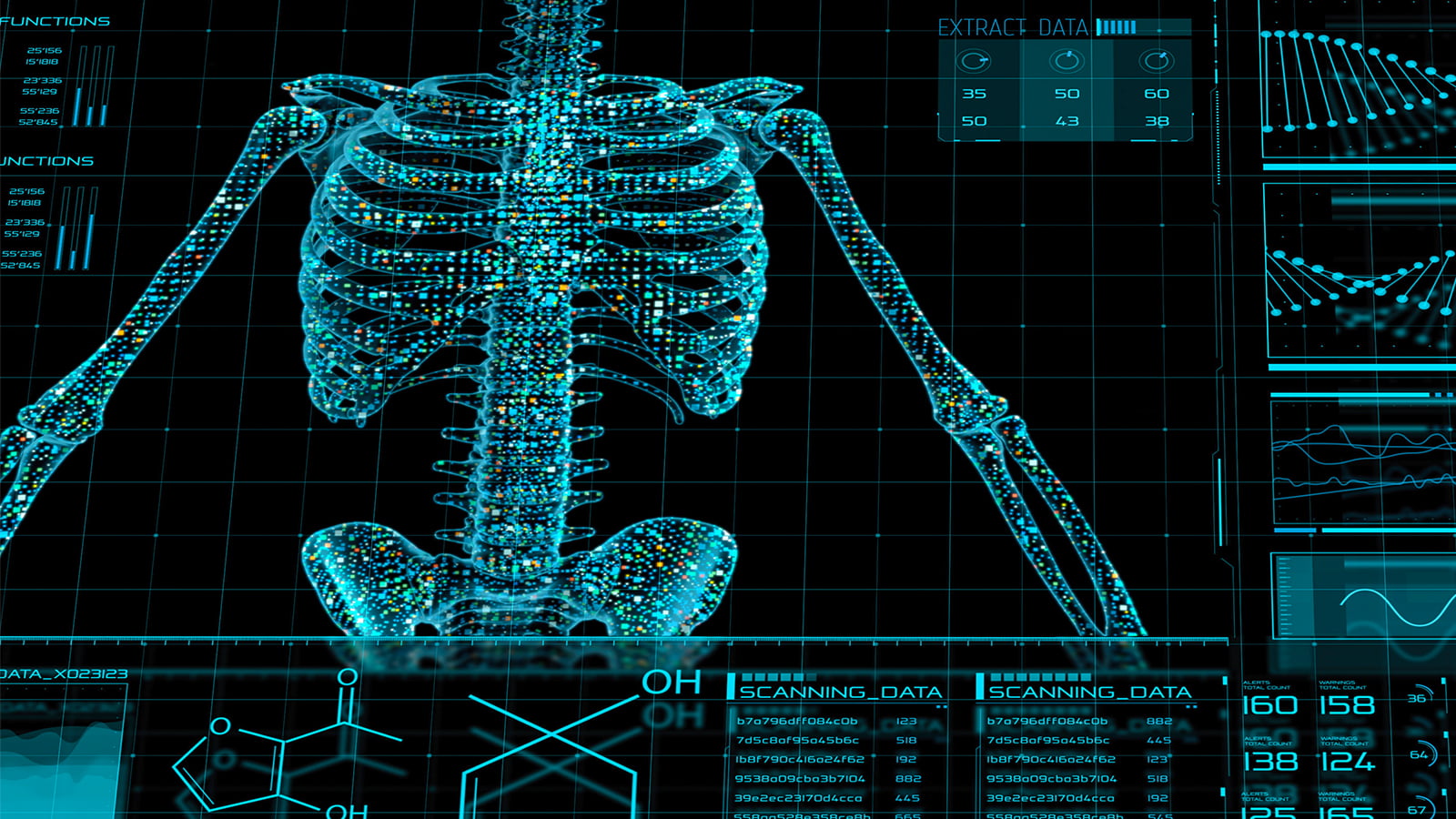Svetlana Komarova first began studying bone as a postdoctoral fellow at NASA, where her research was focused on the bone loss that happens to astronauts during space flight. Now, with decades of expertise under her belt, she leads a lab that uses computational modelling to understand the role of bone in the body’s overall health — including during space flight, an area that still fascinates her to this day.
Looking at a skeleton, you may have the illusion that bone is something static and unchangeable. In an actual human body, this couldn’t be further from the truth, as Komarova’s research shows. Bone plays a role in numerous biological processes from metabolism to calcium homeostasis (the process of how the body keeps calcium levels stable, which often involves bones as storage vaults where calcium can be deposited or withdrawn as needed).
“One of our key areas of focus is to understand how these different functions can interact with each other and affect each other.”
One issue with studying bone, Komarova explains, is that “it’s a very slow organ and it takes a long time to change.” Although the effects of some processes or treatments can be seen within days, many changes at the tissue level can take months or even longer.
This is where Komarova’s creation of digital twins is invaluable. The concept of digital twins originated in the field of engineering, Komarova says, and typically described an exact replica based on a physical machine. Within the context of her biomedical engineering research, it’s a bit different. Her digital twins are digital representations of a biological system, something much more challenging to recreate precisely.
The digital twins, created through a complex process using mathematical modelling and computer tools, are essentially simulations of bone that behave exactly like regular bone would. This allows researchers to manipulate the digital twins to gain critical insights into how various processes, from diseases to treatments, might affect a bone.
“Digital twinning allows you to build different scale models to compare how something looks at very early stages versus very late stages, exploring how the processes are connected and how they co-ordinate with each other.”
To help her advance this work, Komarova has been named Tier 1 Canada Research Chair in Digital Twins for Bone Health, joining 17 other U of A recipients who were lauded for the innovative research they conduct as leaders in their fields (see below).
“My research is focused on bone physiology, and I see bone as an integrated organ,” says Komarova, who is also chair of the Department of Biomedical Engineering. “It participates in many different functions of the body.”
Her lab undertakes both experimental and computational research, with each approach informing the other. The experimental research, for example, generates important data and insights that inform the models Komarova creates, while the models can help test hypotheses and identify additional insights that enrich the experimental data.
“The whole idea of how small changes lead to big-scale organ-related changes is where I see the digital twins that I develop really helping in understanding physiological questions.”
Her work on osteoporosis, a common bone disease that affects one in three women and one in five men over 50 worldwide, is leading to AI tools for diagnosis and treatment. “I do find that we’re underutilizing the information we have about osteoporosis, and some of the deterministic models we’ve developed in my lab would really work well with AI,” says Komarova. She also investigates rare bone diseases, an area of interest she developed while working as a research scientist at the Shriners Hospital for Children Canada.
Her space flight research helps move toward a better understanding of bone loss observed in space flights, paving the way for potential solutions allowing us to explore further and further out into the universe. “I’m a sci-fi fan. I believe in space exploration, so that’s an interesting one for me to continue advancing,” says Komarova.
As if that weren’t enough, Komarova spent 20 years of her career at McGill University’s Faculty of Dental Medicine and Oral Health Sciences, so she also studies teeth — another type of mineralized tissue — with the goal of finding answers to issues that affect oral health.
New and renewed Canada Research Chairs at U of A
Komarova is among 18 new or renewed Canada Research Chairs at the U of A. The chairs recognize researchers who demonstrate excellence in a broad range of fields across the health sciences, natural and applied sciences, and social sciences and humanities.
New chairs:
Valerie Carson (Kinesiology, Sport, and Recreation): Tier 1 Canada Research Chair in Movement Behaviours and Child Health
Sara Davison (Medicine & Dentistry): Tier 1 Canada Research Chair in Kidney Supportive Care
Yindi Jing (Engineering): Tier 1 Canada Research Chair in Wireless Communications
Padma Kaul (Medicine & Dentistry): Tier 1 Canada Research Chair in Women and Children’s Cardio-Metabolic Health
Lindsay LeBlanc (Science): Tier 1 Canada Research Chair in Atomic Quantum Science and Technology
Juan Pablo Yanez (Science): Tier 2 Canada Research Chair in Astroparticle Physics
Renewed chairs:
Yasmeen Abu-Laban (Arts): Tier 1 Canada Research Chair in The Politics of Citizenship and Human Rights
David Brown (Arts): Tier 2 Canada Research Chair in Energy Economics and Policy
Stephanie Green (Science): Tier 2 Canada Research Chair in Aquatic Global Change Ecology and Conservation
Jesse Jackson (Medicine & Dentistry): Tier 2 Canada Research Chair in Neural Circuits
Glen Jickling (Medicine & Dentistry): Tier 2 Canada Research Chair in Stroke Genomics and Immunobiology
Shalene Jobin (Native Studies): Tier 2 Canada Research Chair in Indigenous Governance
Linglong Kong (Science): Tier 2 Canada Research Chair in Statistical Learning
Vladimir Michaelis (Science): Tier 2 Canada Research Chair in Magnetic Resonance of Advanced Materials
Anna Taylor (Medicine & Dentistry): Tier 2 Canada Research Chair in Pain and Addiction
Sue Tsai (Medicine & Dentistry): Tier 2 Canada Research Chair in Immune-Metabolic Interface in Health and Disease
Joanne Weber (Education): Tier 2 Canada Research Chair in Deaf Education

